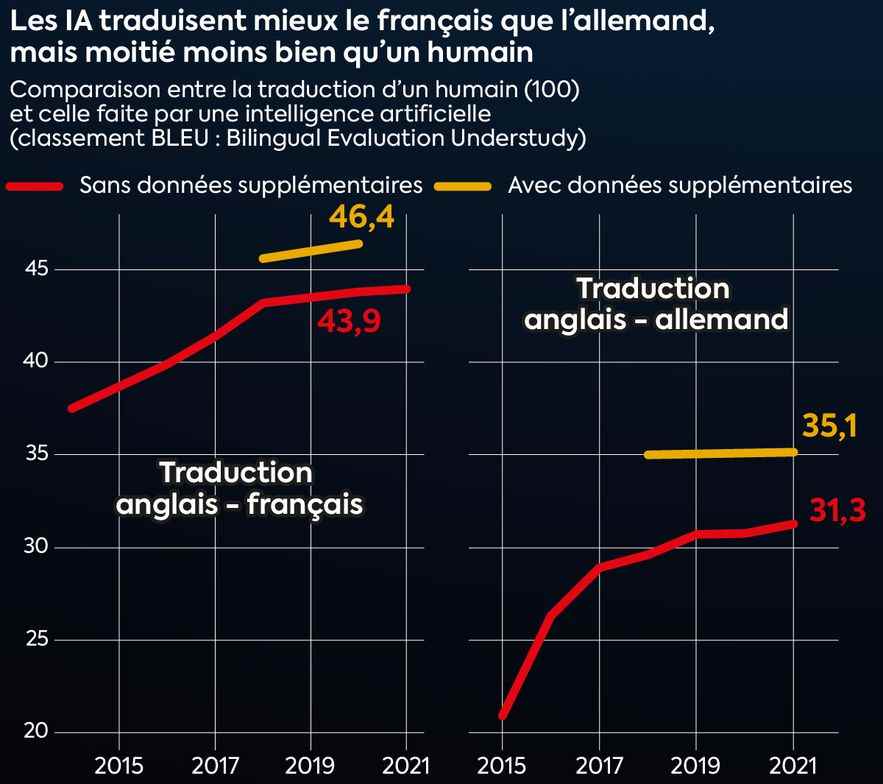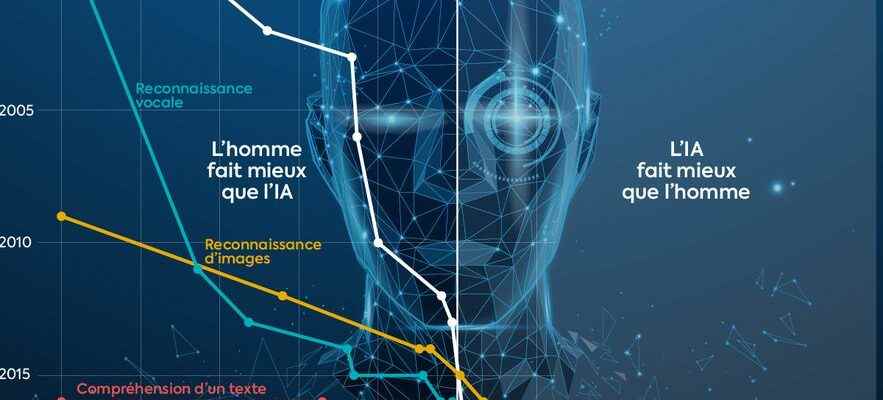Fed by ever larger databases, some machines constantly ruminate on this information and “learn” as they go: these technologies are called “artificial intelligence” (AI) and their development has been done very quickly, to the point to be more and more accessible to the general public today, as demonstrated by the growing success of one of them, ChatGPT.
Recent studies take stock of the capabilities of AIs by comparing them to those of the human brain. The following infographic brings together the main areas of AI development over the past twenty years, and is based on tests carried out in both humans and AI. Only ten years ago, no machine could compete with the human ability to recognize images or formulate sentences. But today, the performance of the most efficient machines is capable of sometimes doing better than our brains.
Infographics
© / Dario Ingiusto / L’Express
However, these results should be tempered: they are the best AIs available and their performance is achieved under optimal laboratory conditions. Nevertheless: in our smartphones, even mid-range ones, we have cameras capable of identifying faces or QR Codes.
One of the areas where the big technology companies are investing massively is undoubtedly that of translations from one language to another. The significant progress of recent years, however, does not hide the difficulty of interpreting living languages, with their nuances, accents, dialects and expressions. The best AI today translate half as well as a human. And this, between two languages spoken by many speakers and of which there is a substantial literature, such as from English to French for example. The results are even less good for translations from English into German, even if they are progressing rapidly.

Infographics
© / Dario Ingiusto / L’Express
A relatively simpler domain for an AI to interpret, because it is more predictable and whose variations are finite, is that of games. The case of chess has been known and publicized for twenty years, when the Deep Blue computer created a sensation by beating the Russian master Garry Kasparov. Since then, the AIs have continued to improve, and their performance now far exceeds that of the best player in the world, the Norwegian Magnus Carlsen.

Infographics
© / Dario Ingiusto / L’Express
A very complete study of the performance of AIs, and their evolution in economic, cultural and ethical terms is the one carried out annually by Stanford University, USA. Other sources used in this infographic can be found on the website Our World in Data.
